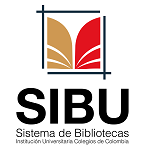SIBU - SISTEMAS DE BIBLIOTECAS UNICOC
Teaching with cases : a practical guide.
por Andersen, Espen [autor] ; Schiano, Bill [autor]
; Schiano, Bill [autor] .
.
Editor: Boston, Massachusetts : Harvard Business School Publishing, 2014Descripción: x, 294 pág. : ilustraciones ; 24 cm.ISBN: 9781625276261.Tema(s): Administración -- Enseñanza| Tipo de ítem | Ubicación | Colección | Signatura topográfica | Número de copia | Estado | Fecha de vencimiento | Código de barras | Reserva de ejemplares |
|---|---|---|---|---|---|---|---|---|
 Libro electrónico Libro electrónico |
Bogotá (Dr. David Ordóñez Rueda) - Campus Norte
Campus Norte Biblioteca de la Institución Universitaria Colegios de Colombia |
Coleccion Online | 658.00711 (Navegar estantería) | No para préstamo | Ebook9393 | |||
 Libro Libro |
Bogotá (Dr. David Ordóñez Rueda) - Campus Norte
Campus Norte Biblioteca de la Institución Universitaria Colegios de Colombia |
658.00711 A522 2014 (Navegar estantería) | Ej. 1 | Disponible | 12742 |
Incluye referencias bibliográficas e índice.
1. Introduction: Why you should read this book. 2. Fundations: preparing for the course. 3. Flow during the class session. 4. Feedback: assignments, grading, and guidance. 5. Managing classroom issues. 6. Quantitative and technical material. 7. Adjusting for languaje and culture. 8. Preparing for the next time. 9. Fostering case teaching at the school level. 10 Technologies for case teaching.
This book got its start when Espen sat down to explain how to do case teaching to his colleagues at BI Norwegian Business School in Oslo. Faculty at BI, as at most business schools, use case teaching sporadically, at their own initiative. Espen loves case teaching, uses it for most of his classes, and would like to see more of it, so he set out to write a short and punchy “Top Ten Tip List for Case Teachers.” Before he knew it, the document had expanded to ten pages, then to twenty, and eventually to an eighty-page print-on-demand book in Norwegian. Bill teaches in the United States, at Bentley University in Waltham, Massachusetts, and, like Espen, is a proponent of cases and discussion-based teaching. We have known each other since our doctoral student days and even taught courses together via videoconferencing across the Atlantic. When Espen spent sabbatical time at Bentley in 2009, the little Norwegian case teaching book became a subject for discussion. Bill liked it but had lots of suggestions (Bill always has lots of suggestions), and the idea of writing a real book on the practice of case teaching was born. And here is the result: approximately 90,000 words of practical advice on how to do case teaching in—and this is a key point—a setting where case teaching is not the norm. We intend the book to be easy reading, with a relentless focus on the practical. We do not expect you to absorb and implement all of the ideas at once—and while we certainly encourage reading the book chapter by chapter, we hope you will find it useful as a reference when specific issues come up and as a periodic refresher. Each chapter can be read independently and is divided into subsections to facilitate searching
Unicoc
Inglés
© 2014 UNICOC | Institución Universitaria Colegios de Colombia - UNICOC
Bogotá D.C. Autopista Norte Km. 20. Teléfono:(571)6683535
Cali: Calle 13 Norte No. 3N-13. Teléfono: (572)6608887




